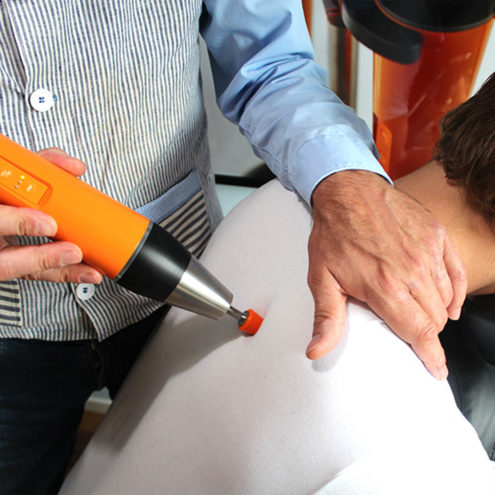Sudden Foot Pain: Causes and Management

Foot pain is a problem that can affect anyone, regardless of age and life situation. Sudden foot pain can be particularly troublesome, as it occurs without warning and can have a sudden impact on everyday life. In this article, we will explore the causes of sudden foot pain, the most common symptoms and how best to manage this problem.
What can cause sudden foot pain?
Sudden foot pain can have many different causes, ranging from minor problems that can be easily treated at home to more serious conditions that require emergency care.
Possible causes of sudden foot pain without obvious injury or trauma
Many times, sudden foot pain can occur without any obvious injury or trauma. This can be due to a variety of factors:
Overexertion: The muscles and ligaments of the foot can become overworked and sore after intense physical activity.
Incorrect foot position: Walking or standing in a poorly ergonomic way can put unnecessary strain on the feet and cause pain.
Poor footwear: Wearing shoes that don’t provide enough support or cushioning can lead to foot problems over time.
Chronic diseases: Some chronic diseases, such as diabetes or arthritis, can affect the feet and cause pain.
Common conditions that can result in sudden foot pain, such as plantar fasciitis, Achilles tendonitis or Morton’s neuroma
There are several medical conditions that can specifically cause sudden foot pain:
Plantar fasciitis: Inflammation of the plantar fascia attachment to the heel bone. The plantar fascia is an aponeurosis, tendon sheath that runs along the bottom of the foot. The condition often causes sharp pain in the heel, especially in the morning or after rest.
Achilles tendinitis: Inflammation of the Achilles tendon, which connects the calf muscles to the heel, can cause intense pain behind the foot and occur suddenly with overuse or injury.
Morton’s neuroma: Thickening of the tissue of a sensory nerve, usually at the base of toes 2-4. The condition can cause a sharp burning pain in the front of the foot.
Symptoms of sudden foot pain
Sharp or burning pain in the foot, especially when straining or moving
One of the most characteristic symptoms of sudden foot pain is the sudden onset of a sharp or burning pain. The pain may worsen with strain or movement of the foot. This can make it difficult to walk or stand for long periods of time and can affect one’s ability to perform daily activities.
Swelling or redness around the painful area
Swelling and resulting redness are common signs of inflammation or injury. If the area around the painful part of the foot is swollen, warm and red, it may indicate an inflammation, infection or other underlying injury.
Difficulty supporting or moving the foot normally
If the pain is so intense that it is difficult to support or move the foot normally, this may indicate a more serious injury or condition. This symptom should be taken seriously and may require medical investigation.
Management of sudden foot pain
Managing sudden foot pain effectively often requires a combination of self-care and professional help when needed. Here are some key steps to consider:
Rest and avoidance of activities that aggravate the pain
Rest is essential to allow the feet to recover from overuse or injury. It is important to avoid activities that aggravate pain, such as running, jumping or prolonged standing. Give your feet time to heal by avoiding unnecessary strain.
Application of ice and the elevation method to reduce swelling and relieve pain
Applying ice to the painful area can help reduce swelling and relieve pain. Icing should be done for 15-20 minutes at a time, several times a day. Elevation, i.e. raising the foot above heart level, can also help reduce swelling.
Contact a doctor or specialist if the pain persists or worsens for a proper diagnosis and treatment
If the pain does not improve with self-care or if it worsens, it is important to seek help from a doctor or specialist. An accurate diagnosis is necessary in order to treat the underlying cause of the pain. A specialist can perform physical examinations, X-rays or other diagnostic tests to determine the cause of the pain and recommend appropriate treatment.
How we can help you
At the FasciaClinics we offer specialized treatments to manage foot pain with a focus on the whole. We perform fascia treatments, a highly effective wellness treatment that focuses on treating and maintaining the fascia in our body. The fascia is the network of connective tissue that binds and permeates everything in our body. All cells, tissues (even bone tissue), muscles and organs contain fascia.
Fascia treatment focuses on releasing tension and adhesions in the fascia and increasing its flow. This allows us to have an improved mobility of the body with less pain and improved self-healing.
During the visit, we analyze the whole body to see where compensations and imbalances are and how they have spread. If there is an imbalance in the body, there is a risk that they will spread and affect other structures. That’s why it’s very important to seek help quickly as soon as you get any symptoms. Fascial treatment for sudden foot pain involves balancing the body to even out the stresses on the structures around the foot and ankle. We also focus on softening the plantar fascia, arch and ankle. It is important to remember that there will be tensions and adhesions in the healthy foot, due to the fact that it has had to compensate for the reduced function of the other foot. This means that the healthy foot will also be treated.
The treatment is done both manually and mechanically with gentle vibrations. Less stiff foot with an increased flow in the fascia also allows the cells to absorb substances more easily. The treatment is not painful and is often experienced as very pleasant. Remember that more treatments may be needed to get good results and that it is important to adjust your activities between treatments. If you do activities that make the symptoms worse, it will take longer to get rid of the condition.
In conclusion, sudden foot pain is a problem that can have many different causes and requires careful evaluation and treatment. Understanding the possible causes, recognizing the symptoms, and following self-care and professional treatment guidelines can effectively manage foot pain and improve quality of life. If you experience foot pain that does not improve, do not hesitate to seek help from a specialist to get a proper diagnosis and treatment.
 Search
Search


































